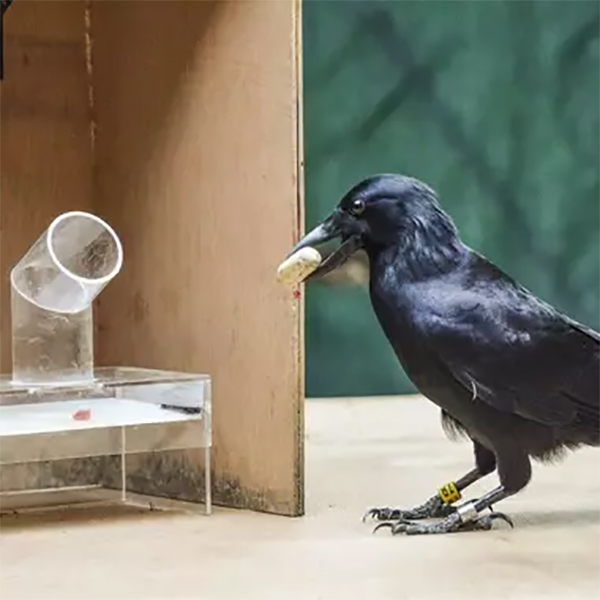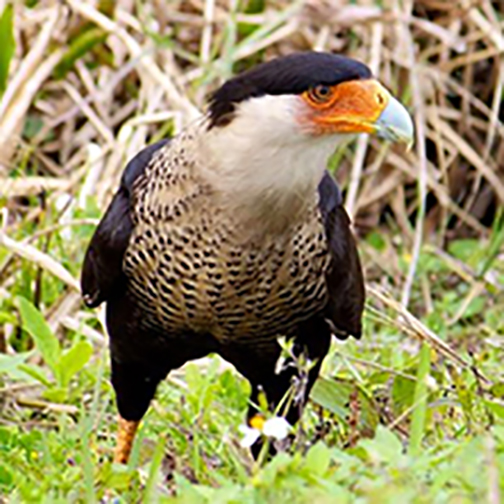VISIT OUR “Every Bird has a Story” MURAL
Inspired by the NYC Audubon Mural project, San Miguel de Allende residents Brian and Nancy Vooris sponsored a beautiful, bigger than life mural along a stretch of the Las Cachinches Arroyo located in Colonia Guadalupe. Brian imagined the mural as dramatic way to draw attention to our colorful wildlife neighbors and the plight of all birds in facing the challenges of climate change and habitat loss.
Brian and Nancy commissioned local artist Juan Jesus Valenzuela Martinez to paint the mural, which was completed on March 11, 2022.
THE STORY OF BIRDS
The remarkable story of birds begins somewhere around 145 million years ago when dinosaurs the first feathered dinosaurs appeared on earth. Over the next 80 million years they evolved to take on many of the traits that make birds, birds, today, such as flight and beaks that allowed them to move toward a more plant-based diet and more; characteristics that made it possible for them to be the only dinosaurs to survive the giant meteor that struck the earth 65 million years ago and caused the complete extinction of most of the terrestrial animals and plants on our planet.
Not all birds survived this horrific event, though. Many scientists believe the ones that survived were able to persist because of one important feature: strong, toothless beaks adapted to cracking seeds and nuts, one of the few remaining food sources following the planet’s destruction. They were also small creatures, requiring less food than their larger counterparts, and they could fly, which enabled them to move from place to place in search of food, and, as we are beginning to learn, they were quite intelligent.
Birds are in jeopardy today. Today, 65 million years after this catastrophic event, birds are in jeopardy again. This time not from a sudden unavoidable event, but because of human-induced climate change that is warming the earth’s temperature, causing erratic weather patterns and other conditions that alter their habitats and sources of food. Urbanization, deforestation, environmental pollution and soil depletion are other ways humans are threatening the survival of birds. Having survived over eons we know that birds are adaptive to changing conditions, but there has never been in time when so many pressures have been placed upon them and their numbers are rapidly declining.
Birds and people are linked together. Birds are perhaps the most studied animal in the world. From studying the history of birds, we have discovered that they are adaptive and resilient creatures. Some species will likely survive these changes and threats, but it’s important to keep in mind that the well-being of birds and human are tightly woven together. Healthy bird populations mean healthy human populations.
Birds are adaptive, but are humans? Change is dificult, but to ensure a healthy future for birds and humans, and the thousands of other creatures whose lives are equally at risk, we must learn to adapt to the changing conditions today and focus our attention on reducing our impact upon the planet. Life on earth depends upon our ability to learn to live in harmony with nature or else we may go the way of the dinosaurs.
every bird has a story
Birds have greatly evolved over the past 65 million years, adapting their features, including bone structure; the shape of their beaks; their wing shapes and flight patterns; and cooperative and defensive strategies in order to take full advantage of the food and resources available to them.
Approximately 10,000 species of birds that live in our world today. Some species are found only in a very small area, while others have a range that spans huge parts of the globe, but you can find birds almost everywhere on earth.
In Mexico we have approximately 1060 bird species. There are 366 known species that live in the State of Guanajuato. Within the Municipality of San Miguel de Allende live 165 species.
Each species of bird has its own story that sets it apart from all others.
Get to know the stories of the five birds featured in the Audubon de Mexico mural
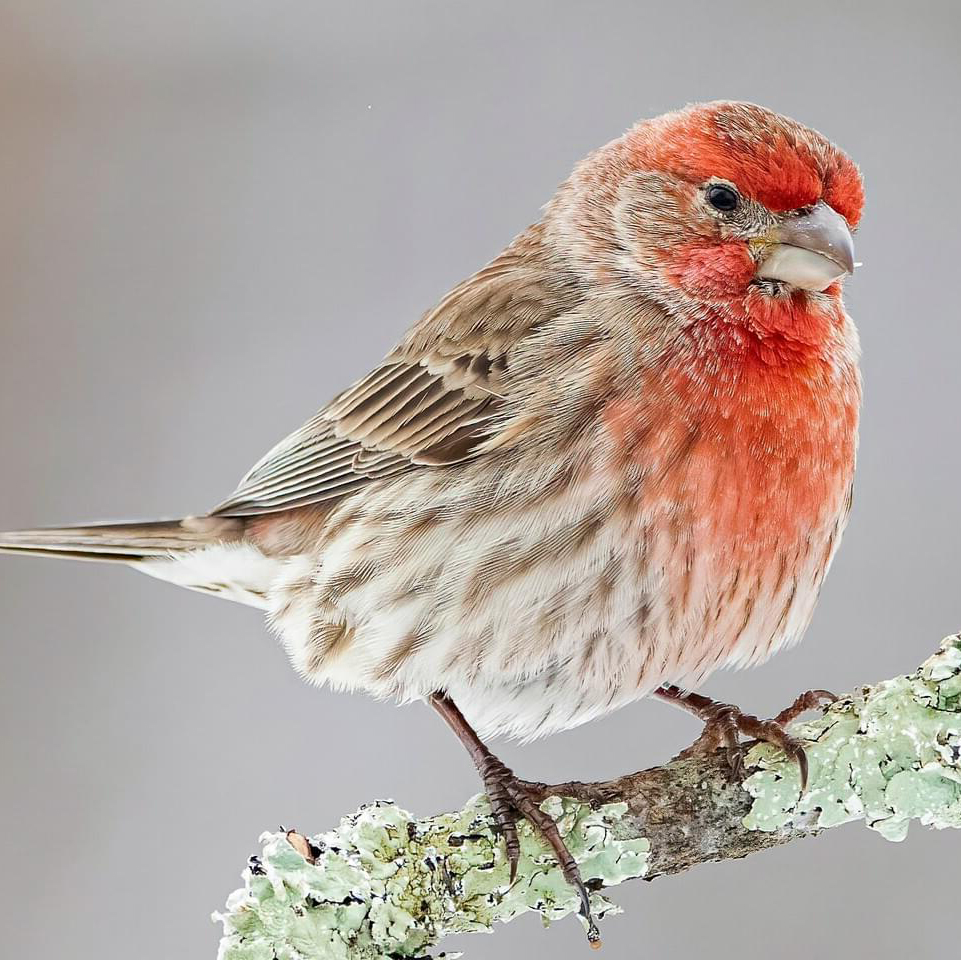
House Finch
You’ll likely hear the beautiful song of this little bird long before you see it perched in their favorite spot high upon a tree.
This year-around resident of San Miguel, is found in urban centers and city parks, residential gardens, agriculture land, along arroyos and the edge of wooded areas. Their ability to make themselves at home in these varied habitats has allowed them to spread throughout the North Amerian continent.
They are very social, and often found feeding on the ground in noisy groups that may include several hundred birds. Usually you will see this behavior in agricultural fields or large open areas, not in the city.
Adult males are rosy red around the face and upper breast, with streaky brown back, belly and tail, while females are a grayish-brown with thick, blurred streaks and an indistinctly marked face.
You can learn a lot about what a bird eats by studying its beak. Finches have round, chunky beaks allowing them to crush hard seeds, which are one of the staples of their diet. They also eat flower buds and many types of fruits and berries with seeds. If you want to attract them to your garden, put out some sunflower seeds. Millet and fruit may attract them, too.
The red color of the male’s feathers comes from the pigments in the food it eats (like cactus tuna and other fruits and berries). How well a male House Finch is able to feed himself is important to his being selected as a suitable mate. Female House Finches look for males with head feathers that are the deepest red. Somehow the females know that red feathers are the sign of a well-fed man.
During the spring nesting season, look for their cup-shaped, finely woven nests (about 7” in exterior diameter and 1-3” cup diameter) in trees as well as in cactus and rock ledges. They also build nests on structures such as street lamps, building ledges and hanging planters.
Females lay 2-6 eggs, and both parents raise as many as six families per season. Most plant-eating birds supplement their babies’ diets with protein from insects, but House Finches feed their nestlings exclusively plant foods.
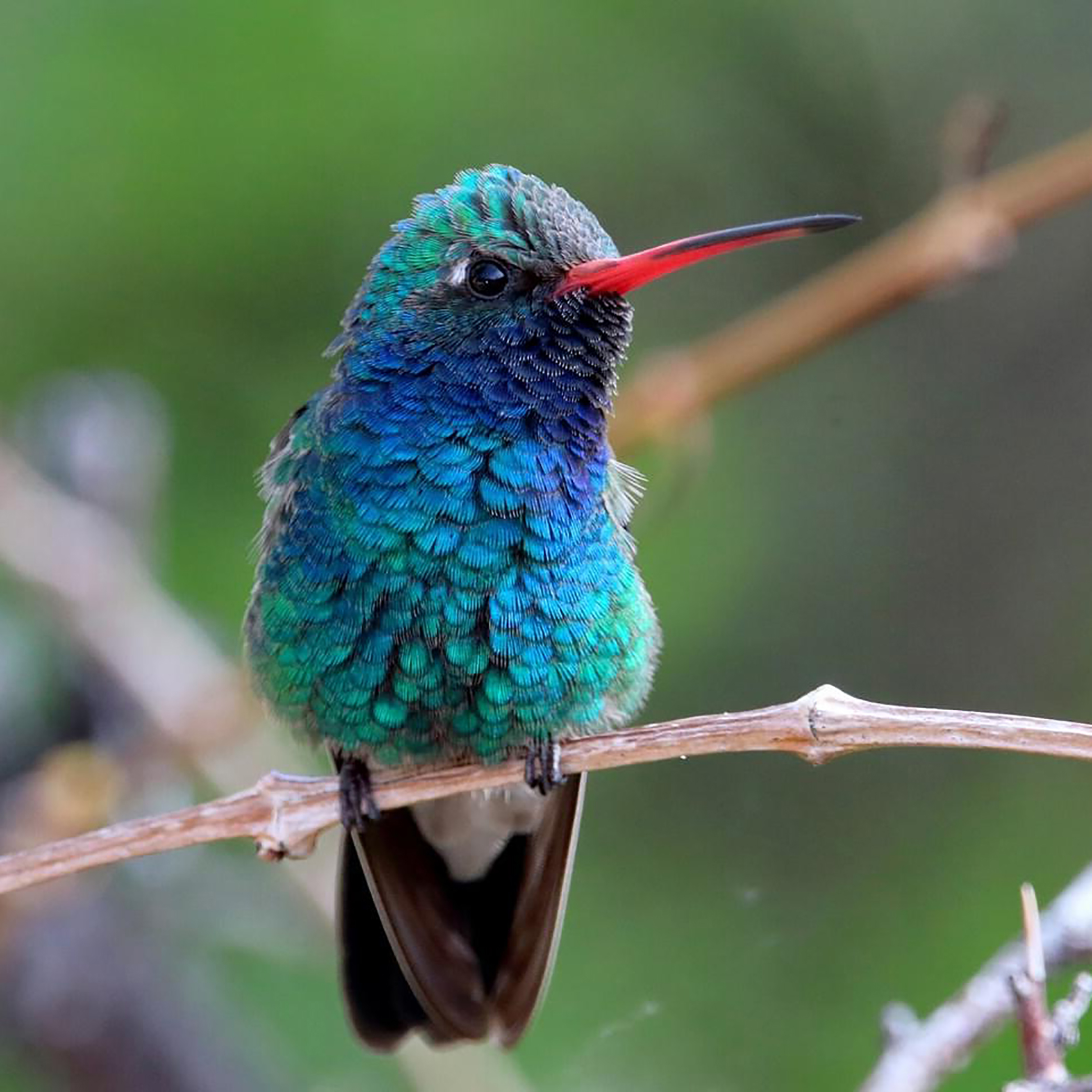
Broad-billed Hummingbird
Hummingbirds are often called the jeweled wings of the sky because of their brilliant, iridescent feathers that sparkle under sunlight.
The Broad-billed hummingbird, one of only two of our native hummingbirds, certainly deserves this accolade. Adult males are rich emerald green with a shimmering blue throat and a red beak tipped in black. Females are golden-green above, gray below, with a white line behind the eye. It is one one of the smaller hummingbirds, weighing only as much as 6 cottonballs (about 3 grams) with a length of only 3.5 to 4”.
Overall, hummingbirds are a fascinating species, with more unique flight abilities than any other bird. They can fly not only forward, but also backward, sideways, and straight up. They can even do backward somersaults, and can hover for long periods of time, which allows them to feed while in the air. They are totally dependent upon flight for all their feeding needs; they cannot walk or hop upon the ground.
Of course all these acrobatic feats take a lot of energy. On average hummingbirds need to consume nearly twice their body weight in flower nectar each day. They also eat insects, requiring the equivalent of 300 fruit flies each day.
Hummingbirds have a special relationship with flowering plants that has evolved over millions of years. These plants produce sweet nectar deep inside tubular flowers that supplies the hummingbird with its energy needs. As the hummingbird moves from flower to flower, its flowers collect pollen from one flower and delivers it to another. This puts into motion the plant’s ability to reproduce. Without pollinators, like hummingbirds, bats and bees, butterflies and other insects, much of our food supply and up to 80% of all flowering plants would not survive.
Their natural habitat is wooded canyons, sites near arroyos and streams, and areas where cactus grows abundantly, but you can find Broad-billed hummingbirds in city gardens. Its easy to attract them to your garden by growing plants with brightly-colored tubular shaped flowers or by hanging a nectar feeder in a safe place away from windows.
In courtship, the male Broad-billed hummingbirds male makes a flight display similar to a hypnotist swinging a pocket watch. Once they have mated, it is up to the females to build a nest and care for her young.
The nest is a small cup, only an inch in diameter, made of bark strips, grasses, and leaves, lined with plant down, wrapped in spiderweb,and sometimes adorned (or camouflaged) on the outside with lichen. The spiderweb provides elasticity to the nest, allowing it to expand with the growing babies.
After completing the nest, the mother Broad-billed lays 2-3 eggs, each about the size of a tic-tac. Look for nests in shrubs, vines and downward growing tree branches, less than 10 feet off the ground.
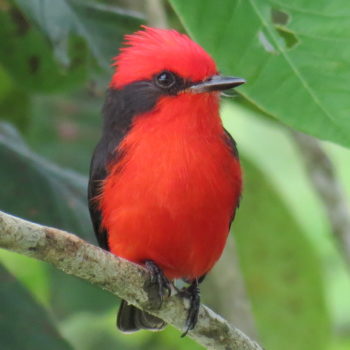
Vermilion Flycatcher
Vermilion Flycatchers are year around residents of San Miguel de Allende, preferring to live near fields, scrublands or areas near water where the insects are plentiful. They are members of the flycatcher family, which gets its name because they eat on the fly (in flight).
Although quite small, only 4-5″ in length, the brilliant red-orange feathers of the male Vermilion Flycatcher will never fail to catch your eye and once it does, you’ll fall in love with this husky bird. It also has a notable dark brown mask through the eyes and brown back, wings and tail. The female is grey-brown color, with light-colored streaks on the breast and salmon or peach-colored feathers beneath her belly.
Typically you will find them patiently sitting upon an exposed tree branch, a dried corn stock, or a low fence waiting for an insect to fly by or be spotted on the ground. Wait a few minutes and you’ll surely see it suddenly, and rapidly, fly out a short distance, scoop up its prey, and return back to the same perch.
They eat a variety of insects such as grasshoppers, crickets, beetles, honeybees and butterflies.
During the springtime breeding season, male Vermilion Flycatchers perform a spectacular courtship flight 20–30 meters above the ground, bouncing sideways across the sky on fluttering wings while singing its courtship song.
Once the female agrees to a relationship, they build a small loose nest together, usually placed in a tree where two branches come together to form a fork. Male and female partners cooperatively raise their young, usually two to four babies, sometimes raising two families within a season.
Keep an eye out and you may be able to see their young as they are learning to fly.
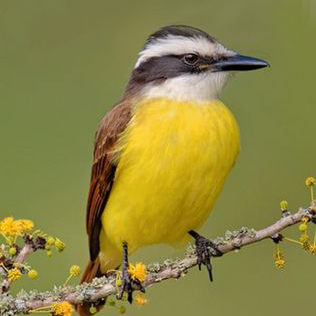
Great Kiskadee
The Great Kiskadee is a member of the Tyrant Flycatcher family (as is the Vermilion Flycatcher), considered to be the largest family of birds known to exist in the world, with more than 400 species. While it may seem a little unfair that this family is referred to as “Tyrant” Flycatchers, since only one member was considered to behave in this manner, it is fair to say that many of the flycatcher species do become quite aggressive when defending their nest, including the Great Kiskadee.
As you get to know the Great Kiskadee, you will learn it has a voice as loud as its yellow belly and breast! But don’t hold that against them. They are only calling out to let everyone know where they are, or at times they may be using their voice as a defense strategy.
Their habit is to sit on exposed branches near the tops of trees, often above water, where they fly out to catch flying insects or capture food—often small fish—from the water. They also forage on the ground for insects, lizards and small mice. They eat fruit from trees and cactus and sometimes come to bird feeders.
At approximately 9.4 inches in length, Great Kiskadees are twice as large as Vermilion Flycatchers, but you will find their bright yellow color and their noticeable black mask, with white stripes on either side more noticeable than their size. They live along arroyos and rivers, alongside agricultural fields, and they often can be spotted in and around Parque Juarez.
Great Kiskadee pairs stay together for many years. In the spring look within large trees, often near water, for their large, domed nests, with a hidden entrance on the side.
Both female and male build their nest, care for their 4-5 offspring, and fiercely defend their territory. When sensing a threat they screech loudly, throw back their wings, while moving them up and down. At times they may instead flutter their wings while lowering their beak to show off their raised yellow crown patch (a technique males also uses when trying to attract a mate.) Although they are not very large, Kiskadees often successfully chase away much larger birds by letting out harsh calls and flying straight at them, which is probably more annoying than dangerous to their enemy, although quite effective.
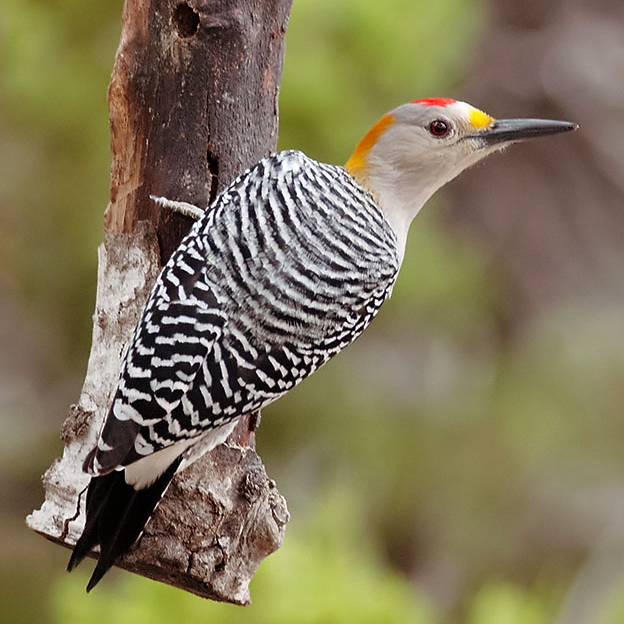
Golden-fronted Woodpecker
Although many woodpecker species have a striking black and white patterned wings and backs, you’ll know a Golden-fronted woodpecker by the bright patches on areas of their head. Males have a yellow spot at the top of their beak, a bright red-orange spot on the back of their head and neck and a red crown. Females are a little less colorful, noted for the yellow spot above the beak and a yellow spot at the back of their head and neck. They do not have a red crown.
These woodpeckers live in areas with mesquite and wooded areas along rivers and arroyos, and urban parks with old trees, like Parque Juarez. Early in the day you can hear them calling out loudly or noisily using their beaks to hammer small holes in trees, to release insects and reveal their larvae that they will later eat. Given how much time they spend hammering in trees; Golden-fronted woodpeckers consume almost an equal amount of fruits and nuts, such as cactus tuna, pomegranates and pecans. And they will come to a bird feeder is there is a supply of pecans, peanuts, bananas, citrus fruits, sunflowers seeds and dried corn.
Golden-fronted Woodpeckers pairs stay together year-round. New pairs form, or established pairs renew, their bonds in early springs with courtship displays. They lower their heads and raise their crowns or swing their heads and point their bills in sync with the other.
When they are ready to start a family, the pair chooses a site for their nest, often dead trees that have a hard bark, but a softer interior. They work together to excavate a cavity with their beaks, somewhere between 6 and 20 feet up in a tree. Some have even carved their nests within utility poles and fence posts. The cavity they create is about 12.5 inches deep, with an entrance hole about 2″ in diameter, just large enough for the female bird to get inside to lay her eggs, and small enough to keep out predators. After hatching, the baby birds will live within the cavity for about 30 days.
You may catch a glimpse of the babies at the entrance of the cavity as their parents fly back and forth to feed them.
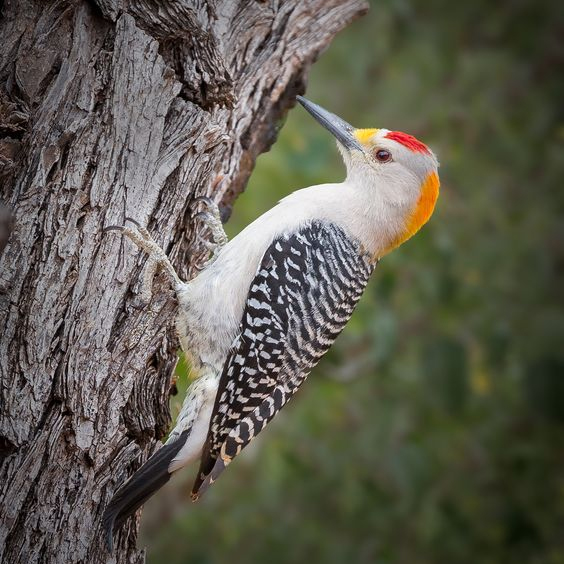
Why don't woodpeckers get headaches?
During courtship, male woodpeckers will hammer on a tree up to 12,000 times a day. They hammer holes in trees to make their nesting cavities and each and every day they are hammering more holes in search of food.
Doesn’t it make you wonder how woodpeckers avoid headaches or even brain damage given that they spend some much time hammering? For a human it would be something like running head first into a tree at full speed, over and over again. We simply couldn’t take it!
Woodpeckers have evolved skulls that are very strong and thick, that absorb shocks, like a helmet. They also have a soft, spongey bone that wraps around their skull, which cushions their brains from impact.
Knowing this, your next question might be but what about their beaks? Are they made from titanium? No, but they are built differently than other bird beaks, with a longer bone in the lower beak that is thought to help to direct the strain of impact away from the brain and onto the body.
Just in case you are curious, they also have a third inner eyelid that automatically closes just before impact and shields its eyes from pieces of wood and prevents their eyeballs from falling out of their heads!
WHAT MAKES A BIRD A BIRD?
We know a bird when we see one, but have you ever thought about what makes a bird a bird?
The answer is feathers. All birds have them, and no other animal has a single one.
Light, strong, flexible, and often colorful or strikingly patterned, feathers are a masterpiece of design, made of the same protein as human nails and hair. The base of each feather is attached to a muscle that allows a bird to move it around.
While all feathers are made up of the same basic parts, each type is modified to serve different functions. Some feathers trap air close to the bird’s body to keep it warm. Other feathers form a waterproof barrier that helps birds stay dry. Stiff wing feathers help birds push themselves through the air and remain aloft, while their long stiff tail feathers help them steer and twist and turn in flight. Colorful and ornamental feathers help them attract a mate or scare predators away, while other feathers help them to blend into their surroundings.
HOW SMART ARE BIRDS?
For many years, people believed that birds operated by instinct, for who could have imagined that such small animals could have complex brains. However, scientists are now finding that birds are far more intelligent than anyone ever suspected, with brains that function similarly to those of humans and other mammals.
For example, birds can think conceptually, using reason and their imaginations to innovate and learn from their mistakes; they can use tools; play tricks on other species (humans, too) and some show a remarkable sense of curiosity. They cooperate with one another in defending themselves and their territory or hunting for food, and they can communicate specific messages using their own special languages. They have excellent memories, too. A hummingbird can remember the location of every flower in their territory, and, like other migratory birds, can navigate their way across thousands of miles to the same location every year. Crows are known to intentionally leave walnuts in a road and let passing traffic do their nut cracking for them.
what we believe
Sociedad Audubon de México AC is based in San Miguel de Allende, a beautiful colonial town in the mountains of central Mexico.
Through birds and their habitats we seek to connect people with nature and encourage the stewardship of the natural world for the countless ways it supports and enriches our lives, and for the sake of nature itself.
“Tug on anything at all and you’ll find it connected
to everything else in the universe.”
— John Muir
our vision
Our vision is to be an effective advocate for the protection and appreciation of the elements of nature in the San Miguel de Allende area and a leader in the pursuit of a sustainable and just society.
Our Mission
Sociedad Audubon de México recognizes that a healthy environment is critical to the survival of all living beings. Through education, conservation, and recreation we promote environmental stewardship to ensure the welfare of all life in San Miguel de Allende – for today and as a legacy to the generations to come.
Subscribe to our newsletter
Our monthly newsletter will keep you up to date on our scheduled events, our work, and features monthly nature-related articles.

